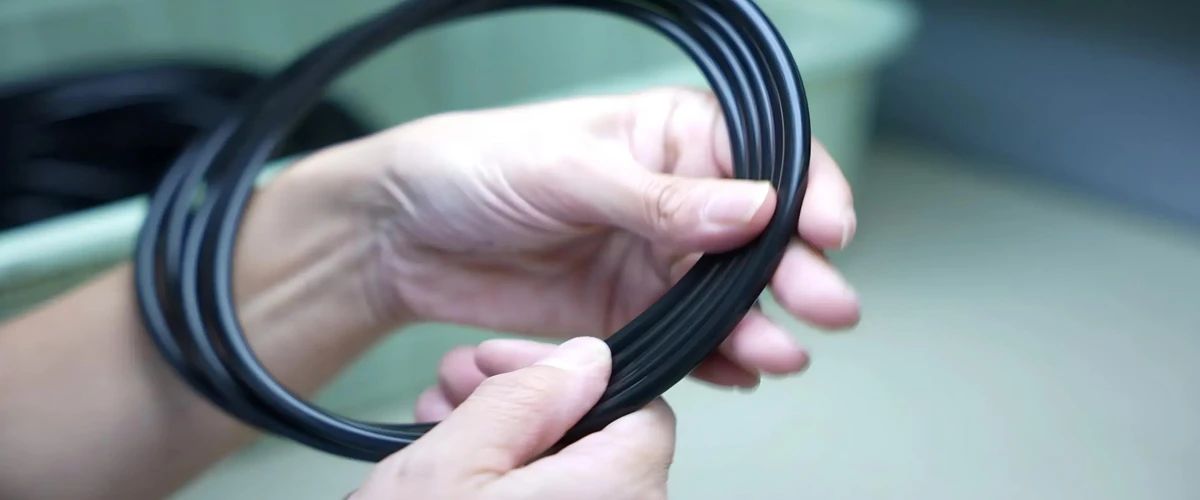
In the market, we often observe that even for the same type of rubber products, products manufactured by different manufacturers have significant differences in texture. For example, some rubber gloves have a soft and smooth touch, while others feel rough and stiff; Some phone cases have a comfortable touch and anti slip effect, while others may feel sticky or too slippery. These differences mainly stem from multiple factors, including the selection of raw materials, formulation design, production processes, equipment accuracy, and quality control. Next, we will analyze these influencing factors from multiple perspectives in depth.
Selection of Rubber Raw Materials
The tactile sensation of rubber products is first affected by the raw materials. Different manufacturers may use rubber from different sources, and even for the same type of rubber, differences in purity, molecular weight, elasticity, and other characteristics can lead to variations in the tactile sensation of the final product. For example:
Natural rubber (NR): It has good elasticity and flexibility, but if it contains a lot of impurities or low rubber content, it may affect
The ultimate tactile sensation.
Synthetic rubber (such as nitrile rubber NBR, chloroprene rubber CR, silicone rubber, etc.): Each has its unique characteristics, and the quality may vary depending on the raw material suppliers of different manufacturers.
Fillers and Enhancers: Some manufacturers may add excessive fillers (such as carbon black, calcium carbonate, talcum powder, etc.) in order to reduce costs. The proportion of these fillers varies, which can affect the tactile feel of the rubber. For example, high levels of carbon black typically make rubber more
Hard, with poor tactile sensation.
Rubber formula design
The tactile quality of rubber products is closely related to the formula design of the manufacturer. A reasonable rubber formula determines the hardness, elasticity, softness, and surface smoothness of the product.
The dosage of softeners and plasticizers: These additives can make rubber softer and improve comfort. However, excessive use may cause the rubber to become sticky, feel greasy, and even reduce its aging resistance. Different manufacturers have different blending ratios in this regard, resulting in varying final tactile sensations.
Optimization of vulcanization system: vulcanization is a key step in rubber processing. A reasonable combination of vulcanizing agents (such as sulfur, peroxides) and accelerators (such as TMTD, CBS, etc.) is necessary to ensure that rubber has both appropriate hardness and good flexibility. Excessive vulcanization can cause rubber to become harder and have a poorer tactile sensation; Insufficient vulcanization may lead to rubber being too weak and lacking elasticity.
The use of fillers: Moderate use of fillers can enhance the physical properties of rubber, but excessive fillers can reduce the softness of rubber, making the product feel stiff and rough to the touch. High end manufacturers may use active fillers to enhance the tactile sensation, while low-end manufacturers may use inexpensive fillers, resulting in a poorer tactile sensation.
Production process and processing accuracy
Even if the raw materials are the same, the differences in production processes among different manufacturers can lead to significant variations in the tactile sensation of the final product. Mainly manifested in the following aspects:
Mixing process: The mixing process of rubber determines the uniformity of the distribution of various formula components. Uniformly mixed rubber material has a delicate and uniform texture after vulcanization, while unevenly mixed rubber material may cause some parts to become hard and some parts to become soft, affecting the overall texture.
Molding process: There are various ways to mold rubber, such as rolling, extrusion, compression molding, injection molding, etc. Different molding processes can affect the smoothness and density of the rubber surface. The precision of the mold, the use of release agents, and the control of molding temperature,
All of them will affect the tactile sensation.
Vulcanization process: The vulcanization process determines the final hardness and elasticity of the rubber. High end manufacturers will strictly control the vulcanization temperature, time, and pressure to achieve the optimal vulcanization state of rubber and provide a more comfortable touch. However, some manufacturers may not have sufficient vulcanization time or improper control of vulcanization temperature, resulting in rubber hardening or rough texture.
quality control
High end manufacturers usually have strict quality control systems, from raw material inspection, production process monitoring to finished product inspection, each link will be strictly controlled. However, some small manufacturers may reduce the testing process in order to lower costs, resulting in uneven product quality and varying tactile sensations.
Cost control and market positioning
Different manufacturers have different cost controls and market positioning, resulting in differences in tactile sensation. High end manufacturers will use better raw materials, adopt more advanced processes, and conduct strict quality control to ensure excellent tactile sensation. Some low-end manufacturers, in order to save costs, may choose cheap rubber raw materials, add too much filler to reduce costs, shorten vulcanization time, accelerate production efficiency, and omit some quality inspection processes. These practices will affect the touch of rubber products, making them harder, rougher, or more tolerant
Easy to stick.
In summary, the tactile quality of the same rubber product produced by different manufacturers mainly depends on the quality of the rubber raw materials, the scientific design of the formula, the precision of the production process, the strictness of the quality control system, as well as cost control and market positioning. It is crucial to choose a manufacturer with a good reputation and strong technical strength if you want rubber products with better tactile feel.

